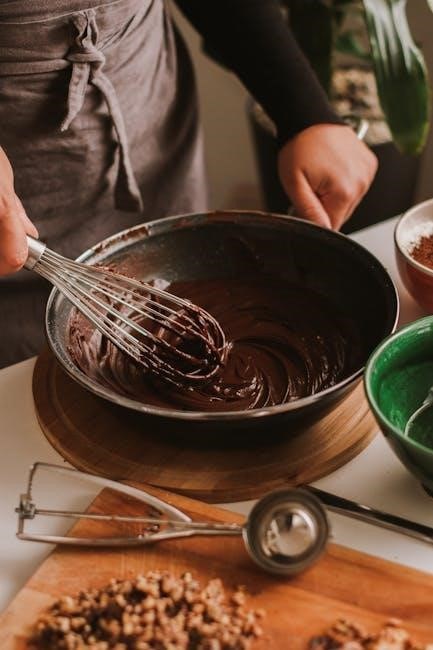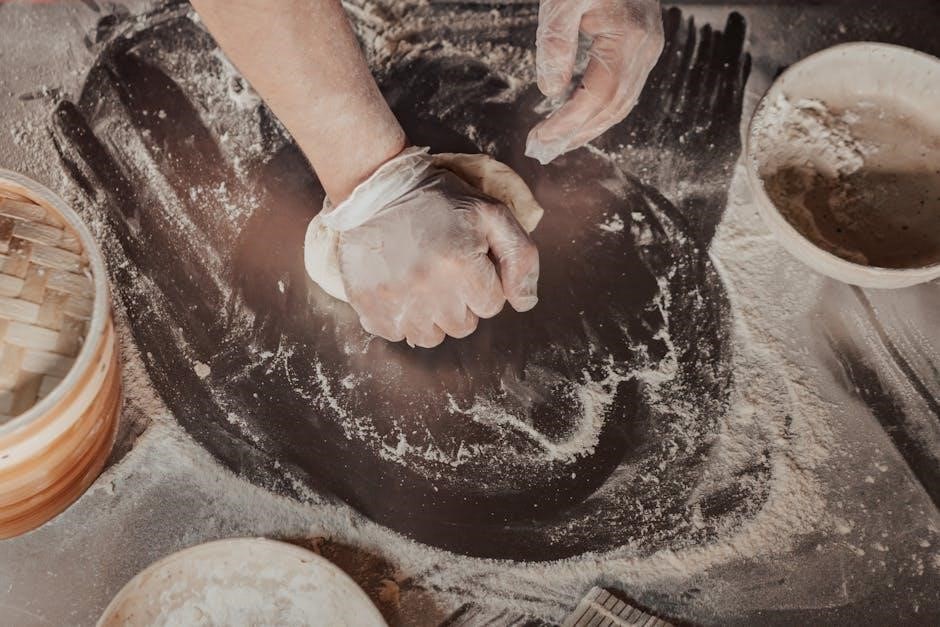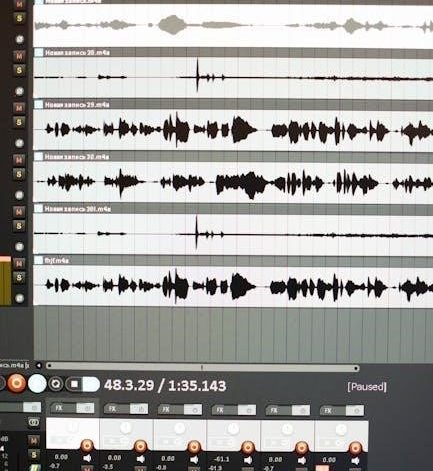Mixing Talstar P requires precise dilution rates, typically 0.33 oz per gallon for 0.02% and 1 oz per gallon for 0.06%. Proper techniques ensure safety and effectiveness.
Overview of Talstar P Insecticide
Talstar P Professional Insecticide is a broad-spectrum pest control solution widely used by professionals and homeowners. Its active ingredient, bifenthrin, effectively targets a variety of pests, including ants, spiders, beetles, and termites. Known for its residual control, Talstar P provides long-lasting protection when applied correctly. It is versatile, suitable for both indoor and outdoor use, though it is not recommended for broad indoor surface spraying. Instead, it is ideal for crack-and-crevice, spot, or perimeter treatments. The product is often praised for its ease of mixing with water and its ability to adhere to surfaces, ensuring maximum efficacy. Talstar P is a popular choice due to its reliability in managing severe infestations and preventing future pest issues. Always follow label instructions for proper application and safety guidelines.
Importance of Proper Mixing Techniques
Properly mixing Talstar P is crucial for achieving effective pest control while ensuring safety. Incorrect dilution can lead to reduced efficacy, potential over-application, or environmental harm. Following the recommended dilution rates ensures the product works as intended without unnecessary chemical exposure. Proper mixing also prevents residue buildup, which can attract pests or cause surface damage. Additionally, accurate dilution rates help maintain the product’s residual activity, providing long-term protection. Improper mixing can result in legal or environmental issues, as it may violate application guidelines. Always refer to the product label for specific instructions to ensure safe and effective use. Proper mixing techniques are the foundation of successful pest management with Talstar P, balancing efficacy, safety, and compliance with regulations.
Understanding the Product Label
The label provides critical details on dilution rates, application instructions, and safety precautions. It specifies 0.02% to 0.06% dilution rates and outlines proper mixing and use guidelines for effectiveness and safety.
Key Information on the Label
The Talstar P label outlines essential mixing ratios, such as 0.33 oz per gallon for a 0.02% solution and 1 oz per gallon for 0.06%. It specifies application rates, targeting up to 1,000 square feet per gallon. Usage guidelines vary by pest type, with detailed instructions for termites, ants, and other insects. Safety data sheets and environmental precautions are also highlighted, emphasizing proper PPE and avoiding spray drift. The label serves as a comprehensive guide, ensuring safe and effective application, and must be read thoroughly before use to comply with all recommendations and regulations.
Recommended Dilution Rates
Talstar P is mixed at 0.33 oz per gallon for a 0.02% dilution and 1 oz per gallon for a 0.06% concentration. These rates ensure effective pest control while minimizing risks. For lighter infestations, the lower concentration suffices, while severe cases require the higher rate. Always measure accurately to maintain the correct dilution, as deviations can reduce efficacy or pose safety hazards. The label provides clear guidelines to avoid overuse or underuse, ensuring optimal results. Proper mixing is crucial for both indoor and outdoor applications, targeting pests like ants, termites, and roaches effectively. Adhering to these rates ensures the product performs as intended, providing long-lasting residual control and safeguarding health and the environment.

Safety Precautions Before Mixing
Wear protective gear, ensure good ventilation, avoid skin contact, and keep the area clear of people and pets to prevent exposure risks during mixing.
Personal Protective Equipment (PPE)
When mixing Talstar P, wear long sleeves, long pants, closed-toe shoes, chemical-resistant gloves, and protective eyewear like goggles or glasses with side shields. A dust/mist respirator is also recommended to avoid inhaling any spray mist. Ensure all PPE fits properly and is in good condition to prevent skin contact or exposure. Avoid wearing loose clothing that could get caught in equipment or contaminated. Remove and wash PPE immediately after use, and launder clothes separately from other items. These precautions minimize risks associated with handling insecticides, ensuring a safer mixing process. Always prioritize protective gear to protect yourself from potential chemical exposure during preparation and application.
Safe Mixing Environment
Ensure the mixing area is well-ventilated to prevent inhalation of fumes. Avoid mixing Talstar P near food, water sources, or areas where people gather. Keep pets and children away during the process. Use protective coverings like drop cloths or plastic sheets to shield surfaces from accidental spills. Avoid mixing in extreme temperatures or humidity, as this could affect the product’s stability. Always mix outdoors or in a dedicated area with good airflow to minimize exposure risks. Keep the area clean and free of clutter to prevent accidental spills or contamination. Properly dispose of any unused mixture and cleaning materials. Ensure the area is safe and accessible to avoid tripping or accidents. Following these guidelines helps create a secure environment for mixing Talstar P effectively and safely.

Mixing Instructions for Talstar P
Fill the sprayer with water, add the required Talstar P ounces, and mix thoroughly. Always dilute according to the label for optimal effectiveness and safety.
General Guidelines for Mixing
When preparing Talstar P, always start with clean equipment and water. Fill the sprayer with the desired volume of water first, then add the recommended amount of Talstar P. Mix thoroughly to ensure the solution is uniform. Avoid using contaminated water, as this can reduce the product’s effectiveness. For most applications, the standard dilution rates are 0.33 fluid ounces per gallon for a 0.02% concentration and 1 fluid ounce per gallon for a 0.06% concentration. These rates ensure proper coverage and residual activity. It’s essential to agitate the mixture periodically during application to maintain consistency. Always refer to the product label for specific instructions tailored to your pest control needs.
Standard Dilution Rates
The standard dilution rates for Talstar P are 0.02% and 0.06%. For a 0.02% concentration, mix 0.33 fluid ounces of Talstar P per gallon of water. This is ideal for general pest control and preventive treatments. For a 0.06% concentration, use 1 fluid ounce of Talstar P per gallon of water, which is typically reserved for severe infestations or higher pest activity. These rates ensure effective coverage while maintaining product safety. Always use clean water for mixing to prevent contamination and reduce the risk of product inefficiency. Proper agitation during mixing is crucial to achieve a uniform solution. These dilution rates are recommended for both indoor and outdoor applications, depending on the target pest and level of infestation. Adhere to these guidelines to ensure optimal performance and safety.
Adjusting Concentration Based on Infestation Severity
The concentration of Talstar P can be adjusted based on the severity of the infestation. For minor to moderate infestations, a 0.02% dilution (0.33 fluid ounces per gallon) is typically sufficient. This concentration is effective for general pest control and preventive treatments. For severe infestations or heavy pest activity, a 0.06% dilution (1 fluid ounce per gallon) is recommended. This higher concentration provides stronger residual activity and faster knockdown of pests. When adjusting the concentration, consider the type of pest and the level of infestation. For example, bed bugs or carpenter ants may require the higher concentration for optimal results. Always ensure the solution is well-agitated to maintain consistency. Avoid exceeding the maximum recommended rate, as this could lead to potential environmental or safety issues. Adjusting the concentration appropriately ensures effective pest control while adhering to safety guidelines.

Application Techniques
Apply Talstar P as a coarse, low-pressure spray to cracks, crevices, and areas where pests hide. Ideal for outdoor use, following recommended dilution rates for effectiveness.
Areas of Application
Talstar P is primarily used for outdoor applications, targeting the perimeter of buildings, outdoor surfaces, and areas where pests are most active. Indoors, it is applied to cracks, crevices, baseboards, storage areas, closets, and attics. It is also effective for perimeter trench treatments and termite control. Avoid spraying broad indoor surfaces. Always follow label instructions for specific application sites to ensure safe and effective pest management.
Indoor vs. Outdoor Application Methods
Indoor applications of Talstar P are typically limited to cracks, crevices, and spot treatments in areas like baseboards, closets, and attics. Outdoor use is more extensive, covering building perimeters, surfaces, and landscapes. For indoor treatments, a lower concentration (0.02%) is often sufficient, while outdoor applications may require higher concentrations (0.06%) for severe infestations. Always apply as a coarse spray or spot treatment indoors, avoiding broad surface coverage. Outdoors, treat foundations, windows, and doors to create a protective barrier. Use the recommended dilution rates (0.02% to 0.06%) and ensure proper PPE is worn during application. Avoid spraying indoors broadly, as Talstar P is not suitable for such use. Follow label instructions for specific application methods and safety precautions.

Post-Application Precautions
Keep the treated area inaccessible until the spray is dry. Avoid re-entry into treated areas for the recommended time, typically 24 hours. Follow all safety guidelines post-application.
Re-entry Times and Safety Measures
After applying Talstar P, ensure the treated area remains inaccessible until the spray is completely dry. Typically, re-entry is allowed after 24 hours, but always confirm by checking the product label. Wear appropriate PPE, including gloves and protective clothing, if re-entry is necessary before drying. Avoid allowing pets or children to enter treated areas until the surface is dry and safe. Keep the area well-ventilated to prevent inhaling residual fumes. For indoor applications, ensure proper ventilation by opening windows and doors. Never touch or disturb treated surfaces until they are fully dry. Follow all safety guidelines to minimize exposure and ensure the product’s effectiveness. Always adhere to the recommended re-entry times to maintain safety and avoid potential health risks.



